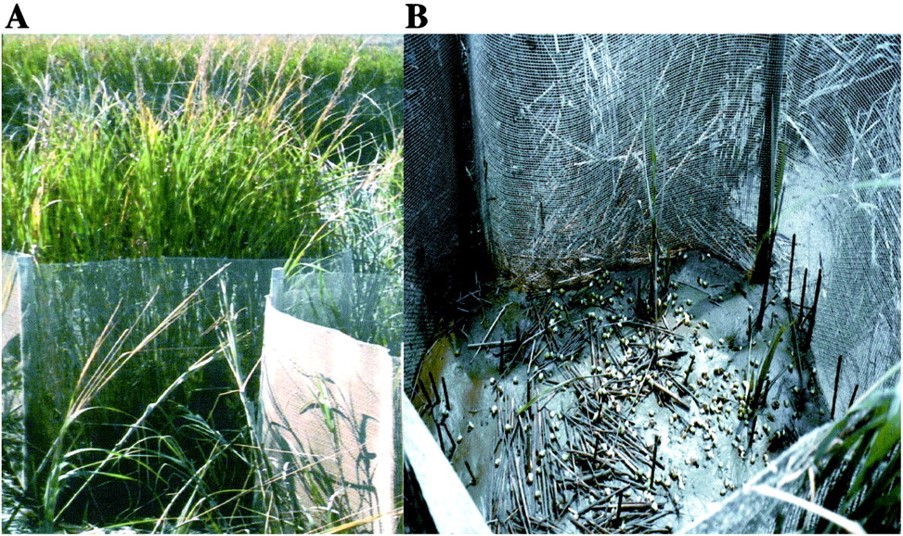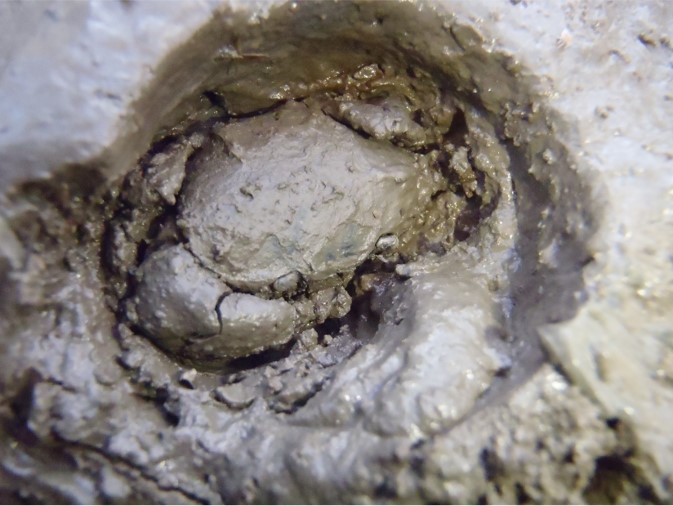While several papers this week remind us that trophic cascades are not found everywhere, here’s a short thread on how crucial they can be in salt marshes

Consumers like the marsh periwinkle have potential to shift productive grasslands into barren mudflats, especially when interacting with abiotic stress. See e.g. experimental evidence fresh off the press from @JuliannaRenzi @sillimanlab https://www.int-res.com/abstracts/meps/v659/p49-58/
Snails recruit and grow well in the tall cordgrass zone, and have potential to be a potent grazer if unchecked, but are eaten like popcorn by nektonic predators such as blue crab https://www.pnas.org/content/99/16/10500
Farther from creeks in the short cordgrass zone, resident predators like this mudcrab below reduce snail numbers through a slow attrition and promote cordgrass via a weak cascade. https://onlinelibrary.wiley.com/doi/full/10.1002/ece3.4571
There’s a twist though: this cascade is partly offset by non-consumptive effects (scared snails seek refuge in grass canopy, strengthening per capita impacts). https://royalsocietypublishing.org/doi/full/10.1098/rsbl.2011.0166 & see https://esajournals.onlinelibrary.wiley.com/doi/abs/10.1890/11-0596.1 @KimbroLab for fascinating interaction with tidal cycles
Predators (including birds) also enhance recovery of salt marshes from drought-driven die-offs. See new results from @seancologie & @angeliniecology. https://besjournals.onlinelibrary.wiley.com/doi/abs/10.1111/1365-2745.13525
Meanwhile, in New England, recreational fishing appears to release another potent consumer - the purple marsh crab - from top-down control, causing die-off and erosion along creek banks. https://esajournals.onlinelibrary.wiley.com/doi/10.1890/11-1314.1
Finally, new work in California by @BrentBHughes suggests otters play an important role in estuarine systems via cascades, facilitating seagrass & saltmarsh https://www.theguardian.com/environment/2020/aug/14/natures-furry-engineers-sea-otters-in-california-estuaries-surprise-scientists-aoe
Trophic cascades are of course not universal, but nor is it a case of paradigm lost. We can see from these salt marsh examples just how powerful trophic cascades can be. Overlook the role of predators at our peril.

 Read on Twitter
Read on Twitter
